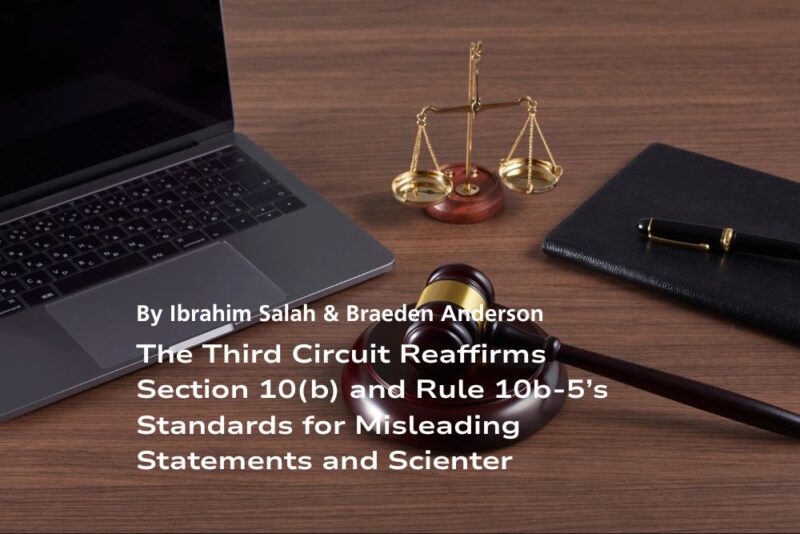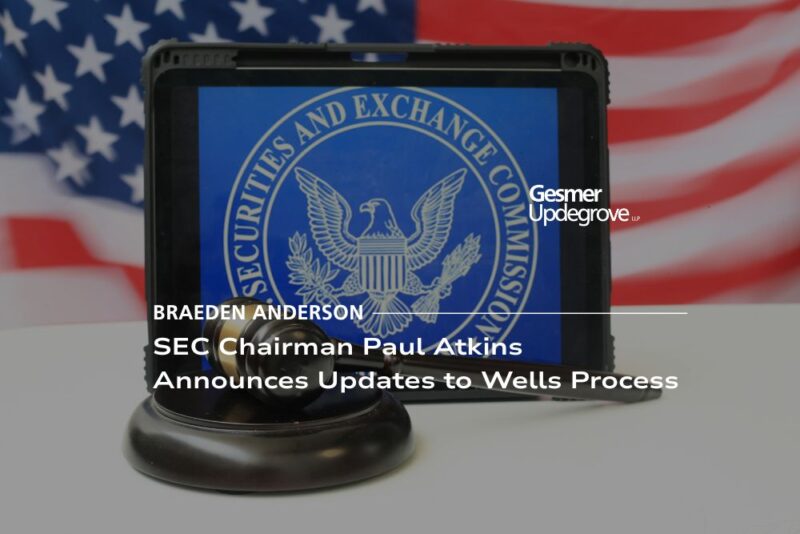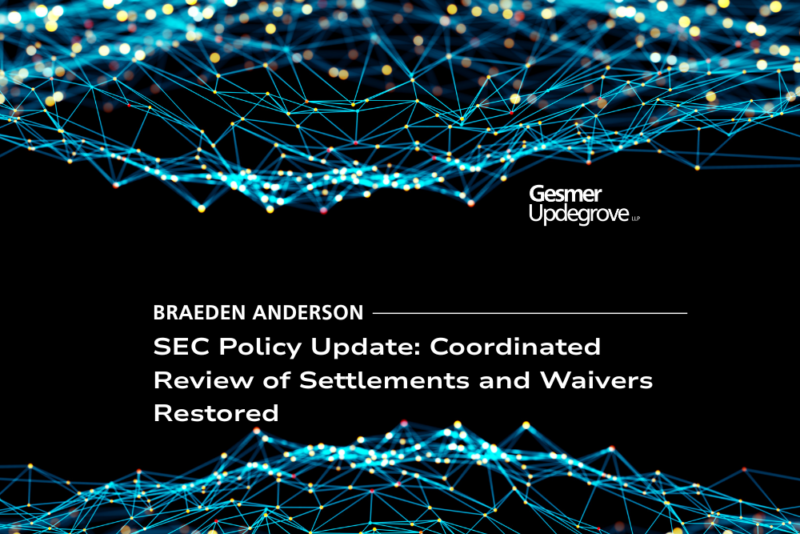
By: Braeden Anderson
Recent leadership changes at the Securities and Exchange Commission may signal a recalibration of how Advisers Act Rule 206(4)-8 is enforced. With Chairman Paul Atkins back at the helm, the Commission’s long-standing reliance on a negligence-based standard could soon come under review.
Background: Goldstein and the Adoption of Rule 206(4)-8
Rule 206(4)-8 was adopted in 2007 following the D.C. Circuit’s decision in Goldstein v. SEC (2006). In Goldstein, the court rejected the SEC’s effort to treat underlying fund investors as advisory clients, holding instead that the client is the fund itself. The SEC responded by promulgating Rule 206(4)-8 to preserve enforcement authority over advisers who mislead or defraud investors or prospective investors in pooled investment vehicles, notwithstanding Goldstein’s limitations.
The rule has since been interpreted to impose liability for negligent conduct, not just intentional or reckless misconduct. This broad standard enabled the SEC to pursue cases involving undisclosed conflicts, misallocation of fees and expenses, and other compliance shortcomings.
Atkins’ Longstanding Objections
Atkins dissented from the rule’s adoption in 2007, objecting on two main grounds:
- Statutory Authority: Section 206(4) empowers the SEC to prohibit “fraudulent, deceptive, or manipulative” conduct. Atkins pointed to Supreme Court precedent interpreting “manipulative” as requiring deliberate action, arguing the Commission lacked authority to premise liability on mere negligence.
- Policy Concerns: Even if authority existed, Atkins warned that a negligence standard would misdirect enforcement resources and chill well-intentioned advisers from serving investors. In his view, intentional or reckless misconduct better aligned with both statutory design and sound enforcement policy.
Enforcement Under a Negligence Standard
Over the past decade, Rule 206(4)-8 became one of the most frequently cited provisions in SEC enforcement. More than 100 cases invoked the rule, many premised on negligence theories. For private fund advisers especially, it became a versatile tool the SEC used to address practices it deemed misleading or unfair.
Contact Us Today
What’s Expected to Change Under Atkins
Since Atkins’ return earlier this year, the SEC has yet to bring an enforcement action relying solely on negligence under Rule 206(4)-8. While it is too soon to declare a definitive shift, the absence is striking given the rule’s historical prominence.
If the Commission moves toward requiring intentional or reckless conduct, the consequences could be significant:
- For advisers: Reduced enforcement risk in matters involving inadvertent errors, incomplete disclosures, or isolated negligence.
- For enforcement priorities: Greater focus on egregious misconduct, particularly fraud affecting both funds and investors.
- For investors: Fewer cases premised on technical or low-level adviser missteps, particularly for sophisticated institutional investors.
- Still, advisers should not assume a free pass. Other Advisers Act provisions—most notably Sections 206(1) and 206(2)—remain available and may continue to impose liability for negligent conduct in certain circumstances.
Key Takeaways
- Rule 206(4)-8 has been central to SEC oversight of private fund advisers for nearly two decades.
- Chairman Atkins has consistently opposed negligence as a sufficient basis for liability under the rule.
- A shift toward requiring intentional or reckless misconduct would meaningfully reshape enforcement risk.
- Advisers should continue to maintain robust compliance programs and carefully manage conflicts and disclosures, even if the negligence standard recedes.
Attorney Advertising — This information is provided as a service to clients, prospective clients, and other friends for educational purposes only. It should not be construed as legal advice or to create an attorney-client relationship.
Check Out Our Latest Publications:
- SEC CHAIR OUTLINES PLAN TO BRING CLARITY TO DIGITAL ASSET OVERSIGHT

- CRYPTO TAX: YEAR-IN-REVIEW

- The Third Circuit Reaffirms Section 10(b) and Rule 10b-5’s Standards for Misleading Statements and Scienter

- SEC Chairman Paul Atkins Announces Updates to Wells Process

- SEC Policy Update: Coordinated Review of Settlements and Waivers Restored

- SEC Provides Key Update on Treasury Clearing Rule Implementation

